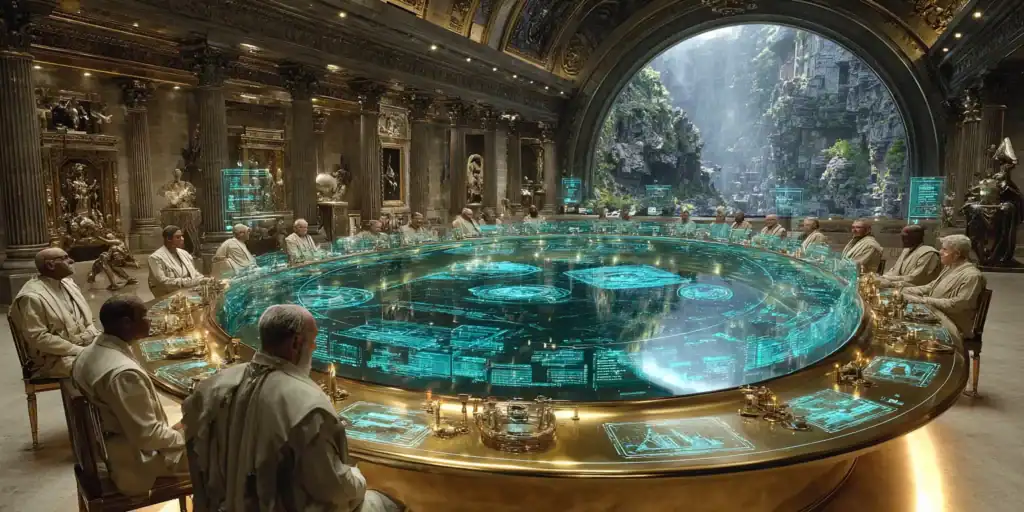In an unprecedented move, Sensay Island in the Philippines is piloting the globe’s first government run by artificial intelligence, featuring AI versions of historical figures at the helm.
This groundbreaking initiative seeks to explore new horizons in governance but comes with a fair share of scepticism and potential risks.
While the use of AI in government is a novel concept, historical attempts at integrating radical technology into governance have had mixed results. AI’s decision-making capabilities and data processing speeds promise efficiency, yet they also raise questions about accountability, ethical considerations, and unforeseen consequences.
AI technology has steadily advanced over the past few decades, showing promise in fields such as healthcare, finance, and even creative arts.
However, applying this technology to governance introduces a complex layer of challenges, particularly in balancing technological objectivity with the nuanced understanding required for human-centric policies.
For those interested in AI policy and governance, Sensay Island’s project is a fascinating experiment worth monitoring. It could pave the way for future innovations or serve as a vital learning experience, highlighting the limitations and ethical implications of tech-driven governance.
AI Cabinet Structure
At the helm of Sensay Island’s AI government is a virtual Marcus Aurelius as President, supported by an AI Winston Churchill in the role of Prime Minister and Nelson Mandela presiding over the Ministry of Justice. The digital cabinet further features Eleanor Roosevelt directing Foreign Affairs, Sun Tzu managing Defence, and Alexander Hamilton overseeing the Treasury. Ada Lovelace heads Science and Technology, while Confucius leads on matters of Education.
The roster continues with Florence Nightingale in charge of Health, George Washington Carver overseeing Agriculture, and Wangari Maathai guiding Environmental policy.
Cultural matters are led by Leonardo da Vinci, with Mahatma Gandhi advising on Ethics and Nikola Tesla focused on Innovation. Infrastructure is directed by Queen Hatshepsut, strategy is orchestrated by Zhuge Liang, and intelligence is managed by T.E. Lawrence.
Each AI minister is developed using the historical figure’s original texts, speeches, and documented ideologies to emulate their distinctive worldview and leadership style. Sensay’s vision is to craft a governance model shaped by historical wisdom and moral depth, filtered through the lens of artificial intelligence.

What The Future Holds
If successful, the Sensay Island experiment could challenge conventional governance paradigms and inspire a new wave of political innovation.
By reconstructing historical figures as AI entities, the initiative taps into both cultural familiarity and philosophical reflection, questioning how foundational ideals might evolve under modern computational logic.
This blending of past personas with future-facing algorithms offers a unique lens through which to reimagine leadership, potentially unburdened by contemporary biases yet still limited by the datasets and programming philosophies behind them.
This pilot raises broader questions about digital sovereignty and the democratisation of algorithmic power. Who programs the AI leaders, and to what extent are their decisions transparent and open to public scrutiny?

The implications extend beyond Sensay Island’s shores, touching on international debates about digital governance, the ethics of machine-led decision-making, and the role of human oversight in automated systems.
As governments around the world grapple with tech regulation and AI integration, Sensay’s bold move could become either a cautionary tale or a visionary benchmark.

